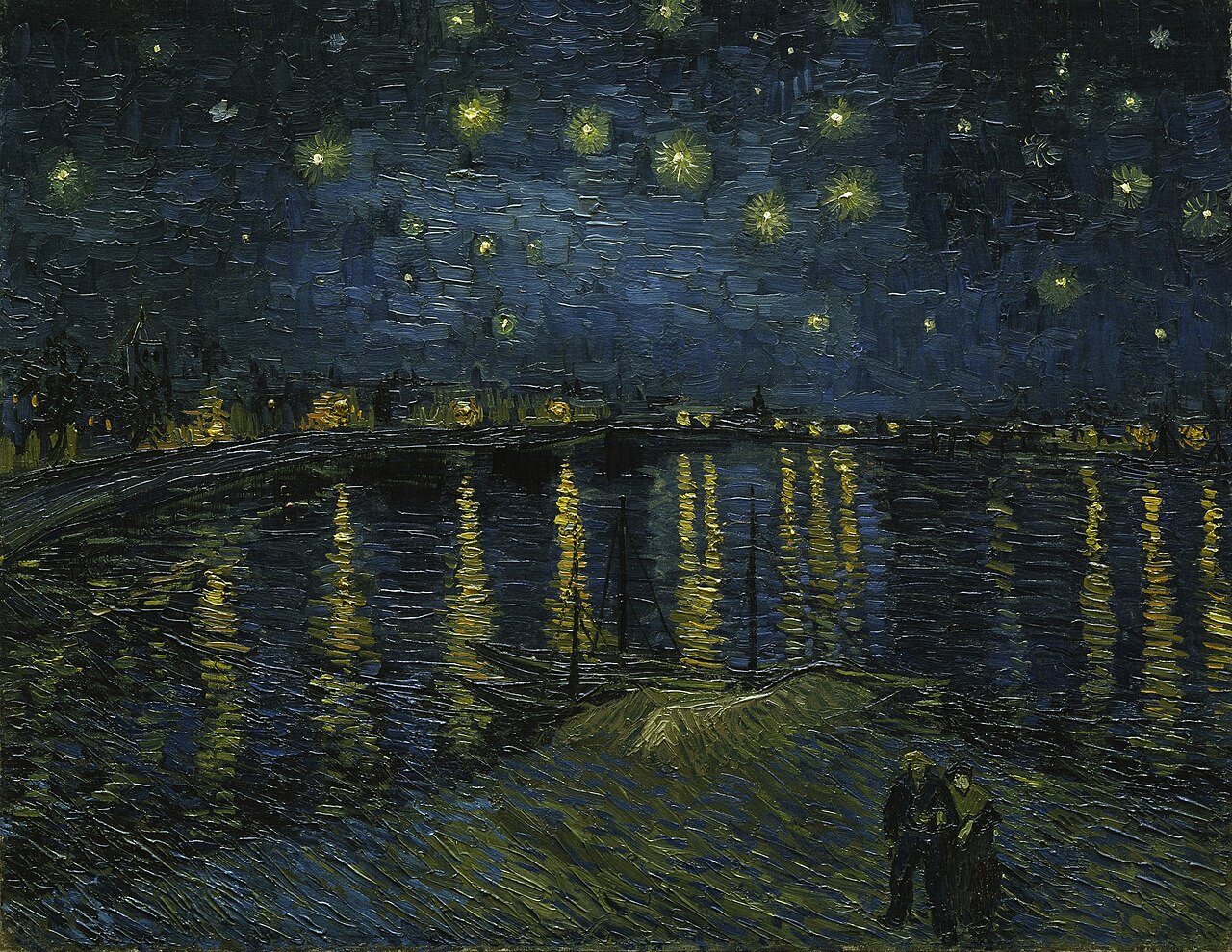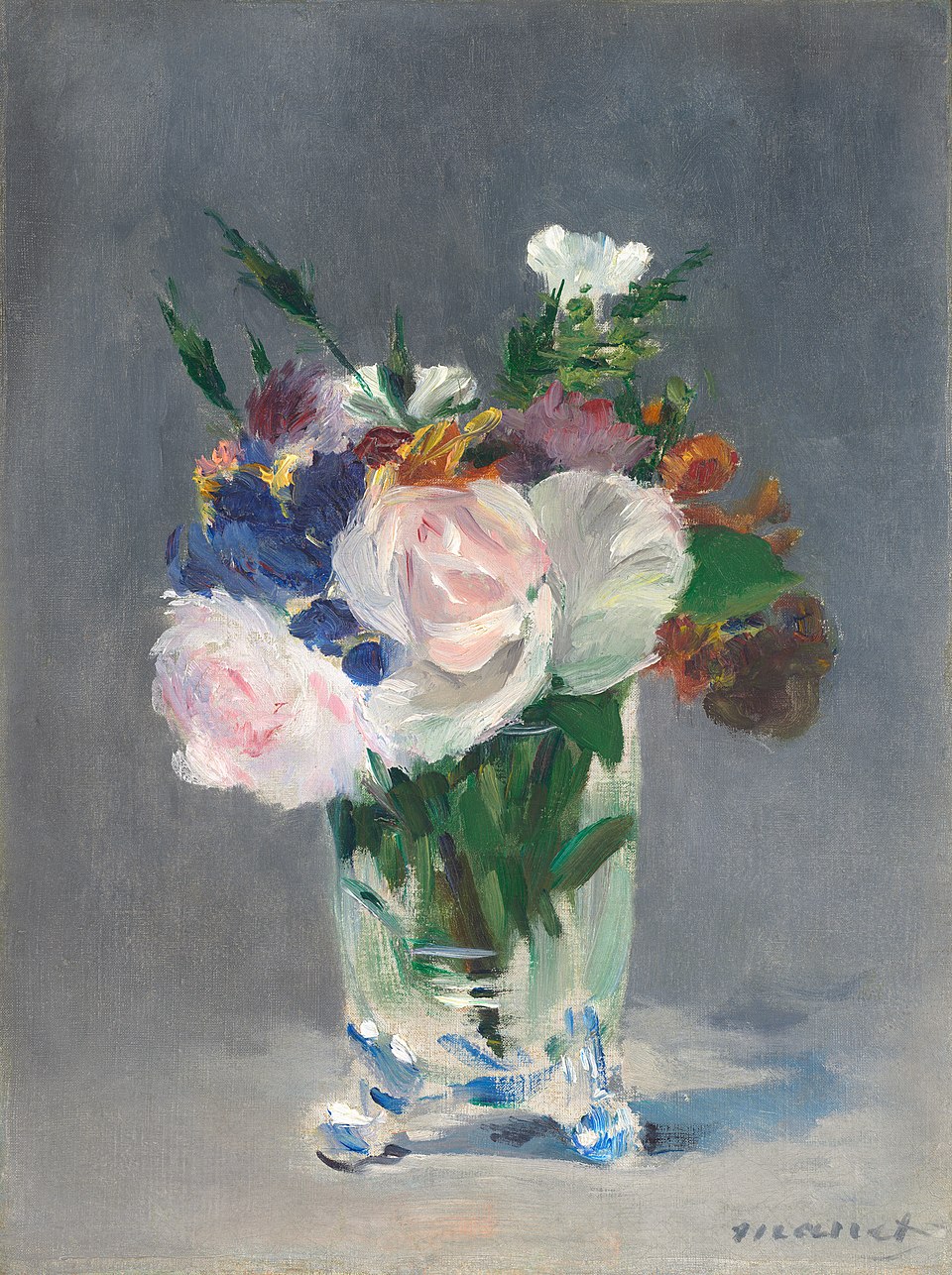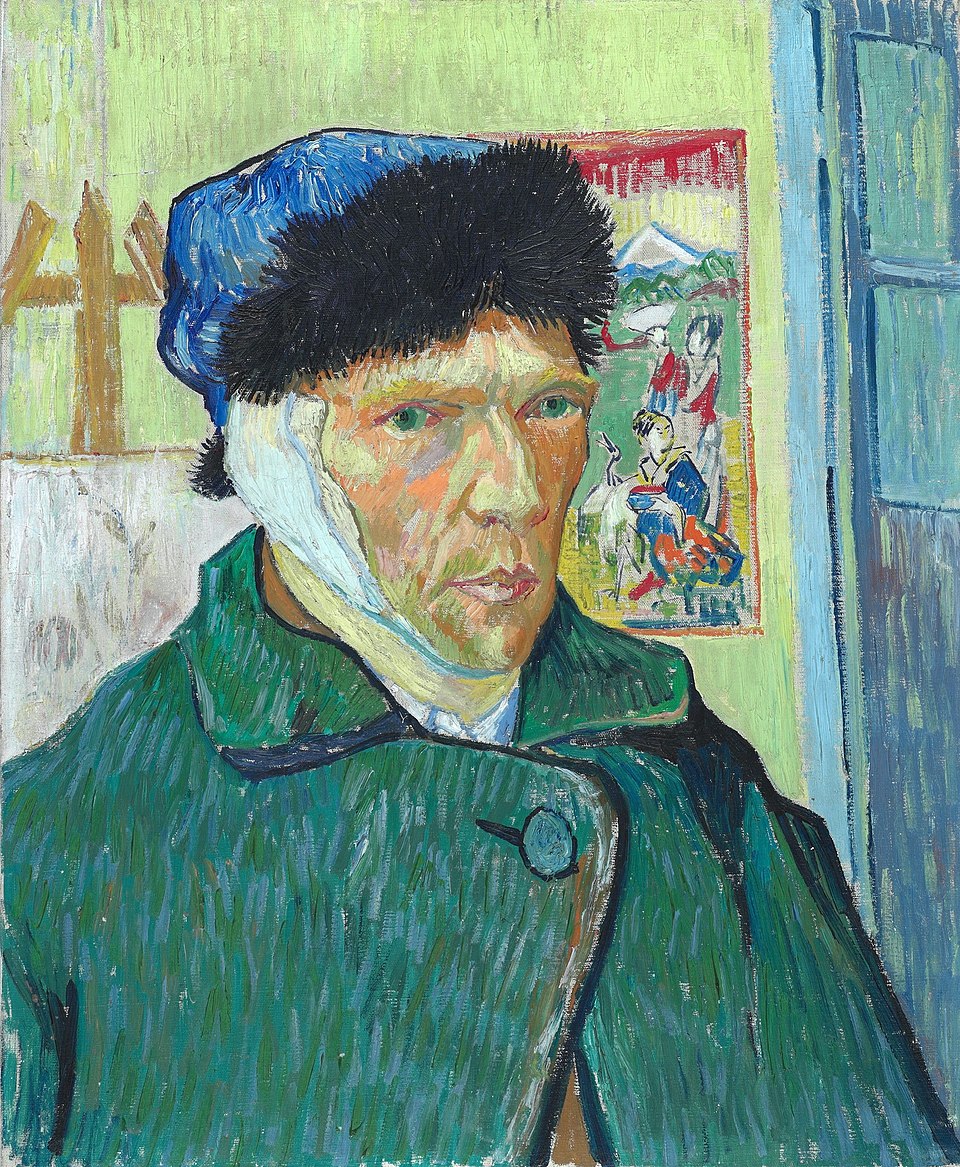I’ve always believed museums have a certain magic – that instant calm when you step into a gallery and stand in front of a masterpiece. Now, science has finally caught up: a new study shows that looking at original works by artists like Van Gogh or Manet can actually lower stress and inflammation in your body.
Picture this: you’re standing a few feet away from Van Gogh’s Self-Portrait with Bandaged Ear. The brushstrokes are thick, the colors somehow pulse with energy, and for a moment – everything else quiets down.
Or you are at Musée d’Orsay looking at Starry Night Over the Rhone or any other of Van Gogh’s paintings. And you are in awe.
And at Orsay you can admire all the impressionists – so, if you haven’t visited this museum, you simply have to go – it is one of my favourites!

It’s not just in your head. Science now says your body is literally relaxing.
A new study proves what museum lovers always suspected
Researchers at King’s College London recently measured what happens in your body when you look at original artworks – not posters, not prints – by artists like Van Gogh, Manet, and Gauguin.
The results? Mind-blowing.
People who viewed original art at The Courtauld Gallery saw their stress hormone cortisol drop by 22% in just minutes – a remarkable finding from this new art and cortisol study.
Even more impressive, inflammation markers in the body went down by nearly 30%, showing that the original art vs reproductions’ health benefits are significant and measurable.
When people looked at reproductions instead? Hardly any change – further proof that your body knows the difference, confirming what early Van Gogh stress research already suggested: original artworks calm us more deeply than copies ever could.
In other words: your body can tell when the art is real.
“It’s not just about beauty – it’s biology,” said one of the study authors. “Original art triggers a full-body stress response.”
Why this hits differently than scrolling through art online
You might think looking at a digital Van Gogh on your phone does the same thing. It doesn’t.
Researchers say there’s something about the texture, depth, scale, and aura of the real thing that changes how our brains and nervous systems react. Standing in a gallery, surrounded by quiet and color, your heart rate subtly shifts, your breathing slows, and your body moves out of fight-or-flight mode.
It’s like nature’s version of deep breathing – but with oil paint.
And this isn’t the first time science said “go to the museum”
The King’s College study just confirmed what earlier research hinted at:
- Office workers who took a 30-minute museum break at lunchtime had lower cortisol and reported feeling happier afterward.
- A study from Drexel University found that simply making art – even if you think you’re “bad” at it – reduced stress in 75% of people tested.
- In Montreal, doctors have literally prescribed museum visits for people struggling with anxiety or burnout – and patients reported feeling calmer and more connected after just one visit.
- And a massive BMJ study found that people who regularly went to museums, concerts, or galleries actually lived longer – more about this below, because I had a previous article, published a few years back, with all of these benefits.
So this isn’t just a one-off trend – it’s decades of evidence all pointing to the same thing: art and museum visits are genuinely good for your health.
The benefits of visiting museums for mental health and relaxation are now backed by science, not just something art lovers feel instinctively.
The “why” behind the wow

Scientists are still figuring out why original art hits us so hard, but here’s what we know so far:
Authenticity matters. Your brain picks up on subtle visual cues – brushstroke depth, pigment texture, scale – and fires up areas linked to emotion and reward.
Obviously, this can only happen if you have some time to really notice a painting. If you just go through galleries as fast as possible, the effect will not be the same. And yes, I spent a day at Musée d’Orsay without being able to visit all its galleries…
The setting helps. Museums slow you down. The lighting, the quiet, even the smell of varnish help your nervous system switch from alert to calm.
I know, you can say that famous museums are crowded. That may be, but sometimes you can just zone out. Or get some earplugs filter noise (NO need to listen to music or anything else.)
Your body synchronizes. The new study showed changes not just in cortisol but in inflammation and heart-rate patterns – proof that this isn’t “just in your mind.”
Basically, art doesn’t just make you feel better – it makes you physically better.
How to turn your next museum visit into a mini-reset

If you know me, I love museums. I include them on all of my itineraries, and whenever I choose where to go next, I look at what museums are available in the area.
And I often share with you the amazing museums I discover – either in dedicated posts for each museum, or in synthesis with several museums – like I have done with the museums to visit in Vienna and the best Amsterdam museums to visit, or those in Paris.
As a parenthesis, such visits allow us to see the wonders of this world, from the past and the present, and sometimes we do not even know if we will be able to see them again, as is the case with the jewels in the Louvre heist.
Anyway, getting back to this article, I can tell you that you don’t need a full afternoon or an art degree. Try this next time you travel or even in your own city – it’s one of the most relaxing things to do while traveling, a simple yet powerful form of wellness travel that helps your mind and body reset.
- Pick one or two rooms max. Don’t rush. Let yourself get lost in one painting for a few minutes.
- Take slow breaths while you look. Your heart rate will naturally follow.
- Leave your phone in your pocket. You can take photos later – your nervous system needs the quiet first.
- Notice textures and colors. The more sensory detail you take in, the stronger the calming response.
- Repeat. A 15-minute “art break” once a month can make a difference.
And yes, I am recommending you to visit museums as often as you can, starting with those in your city. Even if you know them, I am sure that with each visit, a few paintings will reveal interesting new details!
Can’t get to a gallery? There’s still hope.
Not everyone lives near The Louvre or The Courtauld – and that’s okay.
Virtual museum tours have shown some positive results too. In one small study, hospital patients who explored art through VR felt less stress and more positive emotions. It’s not quite the same as the real thing, but it’s a great backup.
Think of virtual tours as “art vitamins” – and originals as the full meal.
I also wrote an article in which I included the top 30 European art museums with free virtual tours / online collections. From the Louvre to the Vatican, everything is included!
As a note – while writing this article, I actually took a few breaks. A few to just immerse myself – again – in the works of art by impressionists. And then, I got lost, again, online, in virtual tours mentioned in the article. I went to the Louvre, again – but to many other museums!
Art Doesn’t Just Calm You – It May Help You Live Longer

If that sounds too good to be true, it’s not the first time scientists have found that art literally supports life.
A landmark art and longevity study from University College London followed more than 6,700 adults for 14 years and discovered that people who regularly went to museums, concerts, or theaters lived longer than those who didn’t.
It’s one of the clearest pieces of evidence yet linking museum visits and longer life. The difference wasn’t tiny – those who engaged with the arts every few months had a 31% lower risk of dying during the study period.
What’s fascinating is that this link held even after accounting for things like education, income, and physical activity. The researchers couldn’t say art was the cause, but the pattern was clear: people who make time for cultural experiences – from a quick museum stop to a night at the opera – tend to live healthier, fuller lives.
You can read more about that fascinating study and its takeaways in my earlier article, People Going to Museums, Theater, Opera, Concerts Live Longer.
Together, these findings tell a beautiful story: the new King’s College London study shows that art can reduce stress and inflammation right now, while the University College London art and longevity study reveals that engaging with art over the years may actually help you live longer. Together, they highlight both the immediate and long-term health benefits of art.
Short-term calm, long-term gain – one more reason to never skip that museum on your next trip.
Where to Start: Museums That Feel Like Therapy

If you’re wondering where to experience this “art-as-wellness” effect, start with museums known for their atmosphere as much as their collections. The Musée d’Orsay in Paris, the Van Gogh Museum in Amsterdam, and the Courtauld Gallery in London are obvious choices, since they feature many of the original works mentioned in the King’s College study.
But you don’t have to travel far – even smaller local galleries or city museums can create the same emotional reset.
The key is to go slow, stay present, and let yourself feel the moment rather than rushing for the next exhibit.
Art therapy for the rest of us
You don’t have to understand art to benefit from it. You just have to show up.
Next time you’re traveling and spot a museum on your route – step in. Even if it’s for 20 minutes. Even if it’s not your style. These quick stops can turn into memorable cultural travel experiences that reduce stress and leave you feeling grounded.
Because the moment you stand in front of an original painting, something deeper happens: your stress melts, your breathing steadies, and your body thanks you for it.
What I want you to remember from this article
If you needed another excuse to visit museums while you travel, here it is: science says it’s good for you.

Whether you’re gazing at Van Gogh’s swirling skies in Amsterdam, Manet’s café scenes in Paris, or a local artist’s canvas in your hometown, your body is doing something remarkable – it’s resetting. If you are in Bucharest, go to our art museums too!
So next time you plan a trip, make sure to add one stop that’s just for you – not for the photo, not for the checklist, but for your well-being.
Your stress level might drop by 22%.
Your heart might literally thank you.
And that’s a souvenir you can’t buy in the gift shop.
As a final note: I know, they exposed people to some artists and a few paintings.
I have a feeling that the results remain the same with a few conditions:
- You truly have time to immerse yourself in the art – if you are on the rush, I am sure you will not get the same benefits
- The art is something you like – because I think that if it gives you a bad feeling, you will not have benefits (and yes, I saw some strange art in some museums – not my type)
Read my other articles that will help you live a healthier, longer life:
- Scientists Reveal the Unexpected Longevity Habit That Costs Nothing
- Scientists Say This Overlooked Habit Could Add Years to Your Life
- Scientists Say People With This Mindset Are Far More Likely to Reach Age 90+
- Add Decades, Not Just Years: 8 Habits That Could Add 20–25 Years to Your Life (Backed by a Massive Study)
- Want a Longer, Happier Life? Scientists Say This 1-Hour Habit Could Be the Key
- Want to Live Longer? Studies Say These Mental Habits May Help (No Sweat Required)
- Eat Earlier, Live Longer? What a New Study Says About Breakfast Timing, Aging, and Longevity
- Simple daily habits for a healthier mind
- How to De-Clutter Your Mind, Backed by Science
- The Personality Traits That Can Help You Live Longer (and Be Happier)
- How to Build Real Self-Esteem That Lasts (Backed by Science, Not Buzzwords)
- 17 Signs You Are Happier Than You Think
- 11 Signs You Are More Intelligent Than You Think
- Things People With High Self-Esteem Rarely Do
- How to Reduce Sugar Intake Naturally
- Science-Backed Benefits of Eating Walnuts (and How Much You Should Actually Eat)
FAQs: The Science of Art, Stress, and Well-Being
Does visiting a museum really reduce stress?
Yes! Studies from King’s College London and the University of Westminster show that viewing original art can lower cortisol and inflammation markers within minutes.
Can virtual tours have the same effect?
They can help – virtual museum tours have been shown to improve mood – but original artworks in person still create the strongest physiological response.
How long should I spend in a museum to feel the benefits?
Even 15–30 minutes is enough for measurable effects, according to research. It’s quality, not quantity, that counts.
Does this work for all kinds of museums?
Yes. Art museums, science museums, and even history exhibits can calm the mind by engaging attention and curiosity, though the new research focused on visual art.
What are the long-term benefits of visiting museums regularly?
A University College London study found that people who attend museums, theaters, and concerts often have a 31% lower risk of dying over 14 years compared to those who don’t.
Photo sources public domain, via Wikipedia: 1, 2, 3, 4, 5 (the painting by Grigorescu is my photo)



